
Keywords: risk assessment

|
Flight Against Infections: The Role of Genetically Engineered Mosquitoes, with Dr. Stephanie JamesEeKs on Health, YouTube, 2024.
In this episode of Causes or Cures, Dr. Eeks chats with Dr. Stephanie James about the potential use of genetically modified mosquitoes (GMMs) to fight diseases that mosquitoes carry and spread, such as Malaria and Dengue Fever. In the podcast, Dr. James provides an overview ... Keywords: Anopheles, gene drive synthetic, malaria, mosquitoes, policy, regulation, risk assessment |

|
Bioinformatic and literature assessment of toxicity and allergenicity of a CRISPR-Cas9 engineered gene drive to control Anopheles gambiae the mosquito vector of human malariaA. Qureshi and J. B. Connolly, Malaria Journal, 22:234. 2023.
Population suppression gene drive is currently being evaluated, including via environmental risk assessment (ERA), for malaria vector control. One such gene drive involves the dsxFCRISPRh transgene encoding (i) hCas9 endonuclease, (ii) T1 guide RNA (gRNA) targeting the doublesex ... Keywords: Anopheles, gene drive synthetic, malaria, mosquitoes, policy, regulation, risk assessment |

|
Leveraging eco-evolutionary models for gene drive risk assessmentM. A. Combs, A. J. Golnar, J. M. Overcash, A. L. Lloyd, K. R. Hayes, D. A. O’Brochta and K. M. Pepin, Trends in Genetics, 2023.
As development of gene drive systems accelerates and diversifies, predicting outcomes for target populations and the potential for human and environmental risks requires accounting for numerous eco-evolutionary processes.Gene drive dynamic models quantify the influence of ... Keywords: Anopheles, gene drive synthetic, malaria, mosquitoes, policy, regulation, risk assessment |

|
Leveraging eco-evolutionary models for gene drive risk assessmentM. A. Combs, A. J. Golnar, J. M. Overcash, A. L. Lloyd, K. R. Hayes, D. A. O’Brochta and K. M. Pepin, Trends in Genetics, 2023.
As development of gene drive systems accelerates and diversifies, predicting outcomes for target populations and the potential for human and environmental risks requires accounting for numerous eco-evolutionary processes.Gene drive dynamic models quantify the influence of ... Keywords: Anopheles, gene drive synthetic, malaria, mosquitoes, policy, regulation, risk assessment |
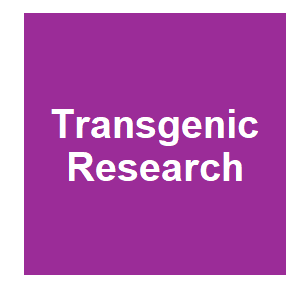
|
Regulatory and policy considerations for the implementation of gene drive-modified mosquitoes to prevent malaria transmissionS. L. James, B. Dass and H. Quemada, Transgenic Research, 2023.
Gene drive-modified mosquitoes (GDMMs) are being developed as possible new tools to prevent transmission of malaria and other mosquito-borne diseases. To date no GDMMs have yet undergone field testing. This early stage is an opportune time for developers, supporters, and possible ... Keywords: Anopheles, gene drive synthetic, malaria, mosquitoes, policy, regulation, risk assessment |
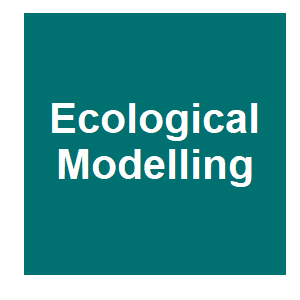
|
Review of gene drive modelling and implications for risk assessment of gene drive organismsJ. L. Frieß, C. R. Lalyer, B. Giese, S. Simon and M. Otto, Ecological Modelling, 478:110285. 2023.
Synthetic gene drive (GD) systems constitute a form of novel invasive environmental biotechnology with far-reaching consequences beyond those of other known genetically modified organisms (GMOs). During the last 10 years, the development of GD systems has been closely linked to ... Keywords: Anopheles, gene drive synthetic, malaria, mosquitoes, policy, regulation, risk assessment |

|
What are gene drivers and why do 300,000 people want them banned?Anika, Social Bites, 2022.
Ecologists in Action and Madrid Agroecologico submitted 300,000 citizen signatures to the Ministry of Ecological Transition and Demographic Challenge, asking Minister Teresa Ribera to give Spain a boost. International moratorium on technology for the release of organisms modified ... Keywords: Anopheles, gene drive synthetic, malaria, mosquitoes, policy, regulation, risk assessment |

|
Points to consider in seeking biosafety approval for research, testing, and environmental release of experimental genetically modified biocontrol products during research and developmentW. K. Tonui, V. Ahuja, C. J. Beech, J. B. Connolly, B. Dass, D. C. M. Glandorf, et al., Transgenic Research, 2022.
Novel genetically modified biological control products (referred to as “GM biocontrol products”) are being considered to address a range of complex problems in public health, conservation, and agriculture, including preventing the transmission of vector-borne parasitic and ... Keywords: Anopheles, gene drive synthetic, malaria, mosquitoes, policy, regulation, risk assessment |
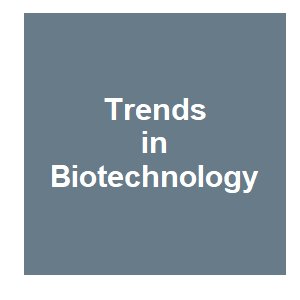
|
Gene Drive in Species Complexes: Defining Target OrganismsJ. B. Connolly, J. Romeis, Y. Devos, D. C. M. Glandorf, G. Turner and M. B. Coulibaly, Trends in Biotechnology, 2022.
Engineered gene drives, which bias their own inheritance to increase in frequency in target populations, are being developed to control mosquito malaria vectors. Such mosquitoes can belong to complexes of both vector and non-vector species that can produce fertile interspecific ... Keywords: Anopheles, gene drive synthetic, malaria, mosquitoes, policy, regulation, risk assessment |

|
Larval mosquito management and risk to aquatic ecosystems: A comparative approach including current tactics and gene-drive Anopheles techniquesR. K. D. Peterson and M. G. Rolston, Transgenic Research, 2022.
Genetic engineering of mosquitoes represents a promising tactic for reducing human suffering from malaria. Gene-drive techniques being developed that suppress or modify populations of Anopheles gambiae have the potential to be used with, or even possibly obviate, microbial and ... Keywords: Anopheles, gene drive synthetic, malaria, mosquitoes, policy, regulation, risk assessment |
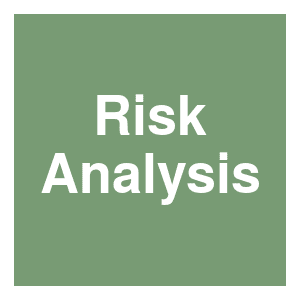
|
Bayesian network-based risk assessment of synthetic biology: Simulating CRISPR-Cas9 gene drive dynamics in invasive rodent managementE. A. Brown, S. R. Eikenbary and W. G. Landis, Risk Analysis, 2022.
Gene drive technology has been proposed to control invasive rodent populations as an alternative to rodenticides. However, this approach has not undergone risk assessment that meets criteria established by Gene Drives on the Horizon, a 2016 report by the National Academies of ... Keywords: Anopheles, gene drive synthetic, malaria, mosquitoes, policy, regulation, risk assessment |

|
Prescribing engagement in environmental risk assessment for gene drive technologyS. Hartley, A. Kokotovich and C. McCalman, Regulation and Governance, 2022.
Abstract Gene drive technology is a nascent biotechnology with the potential to purposefully alter or eliminate a species. There have been broad calls for engagement to inform gene drive governance. Over the past seven years, the gene drive community has been developing risk ... Keywords: Anopheles, gene drive synthetic, malaria, mosquitoes, policy, regulation, risk assessment |

|
A preliminary framework for understanding the governance of novel environmental technologies: Ambiguity, indeterminateness and driftF. Rabitz, M. Feist, M. Honegger, J. Horton, S. Jinnah and J. Reynolds, Earth System Governance, 12:100134. 2022.
We propose a conceptual framework to explain why some technologies are more difficult to govern than others in global environmental governance. We start from the observation that some technologies pose transboundary environmental risks, some provide capacities for managing such ... Keywords: Anopheles, gene drive synthetic, malaria, mosquitoes, policy, regulation, risk assessment |
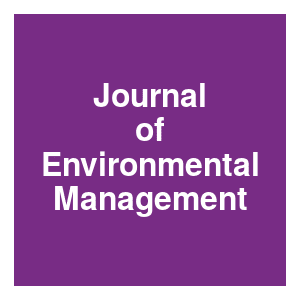
|
Stakeholder engagement to inform the risk assessment and governance of gene drive technology to manage spotted-wing drosophilaA. E. Kokotovich, S. K. Barnhill-Dilling, J. E. Elsensohn, R. Li, J. A. Delborne and H. Burrack, Journal of Environmental Management, 307:114480. 2022.
Emerging biotechnologies, such as gene drive technology, are increasingly being proposed to manage a variety of pests and invasive species. As one method of genetic biocontrol, gene drive technology is currently being developed to manage the invasive agricultural pest ... Keywords: Anopheles, gene drive synthetic, malaria, mosquitoes, policy, regulation, risk assessment |
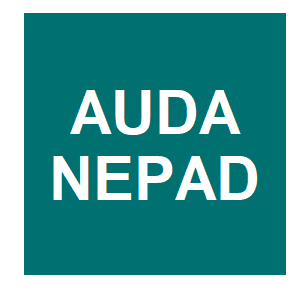
|
Information Sharing in Senegal on the Gene Drive Technology as a potential Complementary Tool for Malaria Vector ControlAUDA-NEPAD, AUDA-NEPAD, 2022.
AUDA-NEPAD in partnership with the National Biosafety Authority (Autorité Nationale de Biosécurité (ANB) in Senegal organized an Information sharing meeting on the gene drive technology as a complementary tool for malaria vector control, from 22-23 December 2021, in Somone, ... Keywords: Anopheles, gene drive synthetic, malaria, mosquitoes, policy, regulation, risk assessment |
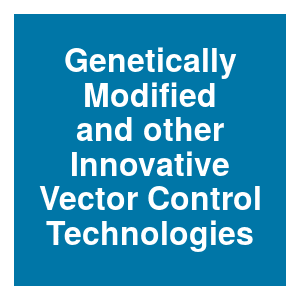
|
Integrated Management of Malaria Vectors in AfricaR. Mbabazi, K. Maredia, B. B. El-Sayed, A. K. Babumba, M. Savadogo and O. Akinbo, Genetically Modified and other Innovative Vector Control Technologies, 2021.
Malaria disease is a major public health burden in Africa. The control of malaria vectors is a critical component for prevention, management, and eradication of malaria disease. This chapter presents information on the current status of malaria vector control in Africa with ... Keywords: Anopheles, gene drive synthetic, malaria, mosquitoes, policy, regulation, risk assessment |

|
Potential use of gene drive modified insects against disease vectors, agricultural pests and invasive species poses new challenges for risk assessmentY. Devos, J. D. Mumford, M. B. Bonsall, A. M. Camargo, L. G. Firbank, D. C. M. Glandorf, F. Nogué, K. Paraskevopoulos and E. A. Wimmer, Critical Reviews in Biotechnology, 2021.
Potential future application of engineered gene drives (GDs), which bias their own inheritance and can spread genetic modifications in wild target populations, has sparked both enthusiasm and concern. Engineered GDs in insects could potentially be used to address long-standing ... Keywords: Anopheles, gene drive synthetic, malaria, mosquitoes, policy, regulation, risk assessment |
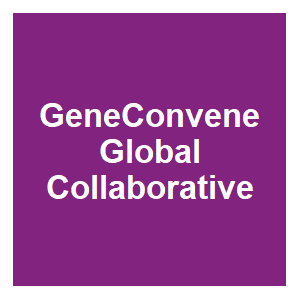
|
Ecological Relationships of Mosquito Disease Vectors: Anticipating Risk Assessment of Gene Drive TechnologiesStephanie James, Hector Quemada and David O'Brochta, GeneConvene Global Collaborative, 2021.
An often-raised concern for the development of genetically modified mosquito technologies, particularly those involving gene drive, as tools to prevent disease transmission is the limitation of our understanding of the roles these species may play within the ecosystem. This ... Keywords: Anopheles, gene drive synthetic, malaria, mosquitoes, policy, regulation, risk assessment |

|
Systematic identification of plausible pathways to potential harm via problem formulation for investigational releases of a population suppression gene drive to control the human malaria vector Anopheles gambiae in West AfricaJ. B. Connolly, J. D. Mumford, S. Fuchs, G. Turner, C. Beech, A. R. North and A. Burt, Malaria Journal, 20:170. 2021.
Population suppression gene drive has been proposed as a strategy for malaria vector control. A CRISPR-Cas9-based transgene homing at the doublesex locus (dsxFCRISPRh) has recently been shown to increase rapidly in frequency in, and suppress, caged laboratory populations of the ... Keywords: Anopheles, gene drive synthetic, malaria, mosquitoes, policy, regulation, risk assessment |
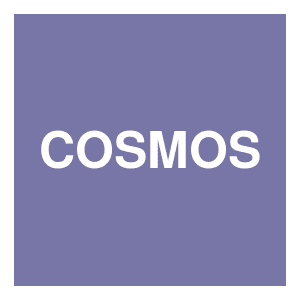
|
Genetically modified mosquitoes for better healthD. Devis, COSMOS, 2021.
One method of preventing these mosquito-born diseases is to use insecticides to kill the mozzies and remove them, but sometimes this only works as a short term solution, or has unintended devasting effects on the ecosystem. Another method for decreasing the number of ... Keywords: Anopheles, gene drive synthetic, malaria, mosquitoes, policy, regulation, risk assessment |

|
Quantifying the risk of vector-borne disease transmission attributable to genetically modified vectorsG. R. Hosack, A. Ickowicz and K. R. Hayes, Royal Society Open Science, 8:201525. 2021.
The relative risk of disease transmission caused by the potential release of transgenic vectors, such as through sterile insect technique or gene drive systems, is assessed with comparison with wild-type vectors. The probabilistic risk framework is demonstrated with an assessment ... Keywords: Anopheles, gene drive synthetic, malaria, mosquitoes, policy, regulation, risk assessment |

|
Ecological Modeling in Risk Assessment of Gene DrivesHector Quemada and David O'Brochta, , 2021.
Unlike non-gene drive organisms, which can be limited in time and space and therefore provide data in small scale tests that can be relevant to large scale releases, the potential for large-scale spread from a limited release, even in well-isolated trials, means that reliance on ... Keywords: Anopheles, gene drive synthetic, malaria, mosquitoes, policy, regulation, risk assessment |

|
GeneConvene Webinar Series on: Ecological Modeling in Risk Assessment of Gene DrivesHector Quemada and David O'Brochta, , 2021.
Unlike non-gene drive organisms, which can be limited in time and space and therefore provide data in small scale tests that can be relevant to large scale releases, the potential for large-scale spread from a limited release, even in well-isolated trials, means that reliance on ... Keywords: Anopheles, gene drive synthetic, malaria, mosquitoes, policy, regulation, risk assessment |

|
Demystifying the Risk Assessment Process for Laboratory-Based Experiments Utilizing Invasive Genetic Elements: It Is More Than Gene DriveZ. N. Adelman, Applied Biosafety, 2021.
Advances in recombinant DNA approaches have resulted in the development of transgene architectures that severely bias their own inheritance, a process commonly referred to as ?gene drive.? The rapid pace of development, combined with the complexity of many gene drive approaches, ... Keywords: Anopheles, gene drive synthetic, malaria, mosquitoes, policy, regulation, risk assessment |
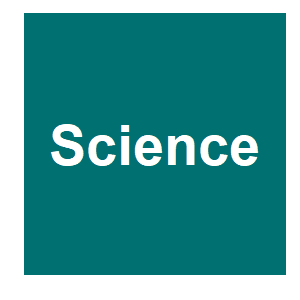
|
Core commitments for field trials of gene drive organismsK. C. Long, L. Alphey, G. J. Annas, C. S. Bloss, K. J. Campbell, J. Champer, C.-H. Chen, A. Choudhary, G. M. Church, J. P. Collins, K. L. Cooper, J. A. Delborne, O. R. Edwards, C. I. Emerson, K. Esvelt, S. W. Evans, R. M. Friedman, V. M. Gantz, F. Gould,, Science, 370:1417-1419. 2020.
While field trials of gene drive organisms (GDOs) ultimately will depend on public policy decisions, those engaged in GDO work can play critical roles in support of these decisions by generating evidence and developing evaluation strategies in fair and effective partnerships with ... Keywords: Anopheles, gene drive synthetic, malaria, mosquitoes, policy, regulation, risk assessment |
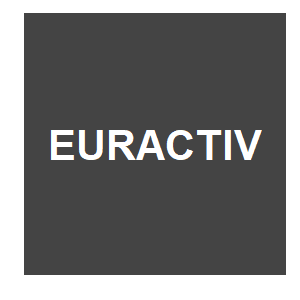
|
Further guidance required for assessment of gene drive technology, says EFSAN. Foote, Euractiv, 2020.
After being mandated by the European Commission, EFSA’s experts on genetically modified organisms (GMOs) published the scientific opinion related to engineered gene drives on Thursday (12 November), specifically focusing on gene drive modified disease-transmitting insects, ... Keywords: Anopheles, gene drive synthetic, malaria, mosquitoes, policy, regulation, risk assessment |
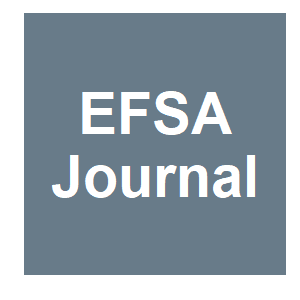
|
Adequacy and sufficiency evaluation of existing EFSA guidelines for the molecular characterisation, environmental risk assessment and post-market environmental monitoring of genetically modified insects containing engineered gene drivesE. Panel o. G. M. Organisms, H. Naegeli, J.-L. Bresson, T. Dalmay, I. C. Dewhurst, M. M. Epstein, P. Guerche, J. Hejatko, F. J. Moreno, E. Mullins, F. Nogué, N. Rostoks, J. J. Sánchez Serrano, G. Savoini, E. Veromann, F. Veronesi, M. B. Bonsall, J. Mumfor, EFSA Journal, 18:e06297. 2020.
As a proactive measure, the European Food Safety Authority (EFSA) has been requested by the European Commission to review whether its previously published guidelines for the risk assessment of genetically modified animals (EFSA, 2012 and 2013), including insects (GMIs), are ... Keywords: Anopheles, gene drive synthetic, malaria, mosquitoes, policy, regulation, risk assessment |

|
EFSA advises on risk assessment of engineered gene drivesEFSA, European Food and Safety Authority, 2020.
EFSA’s existing guidelines for the risk assessment of genetically modified animals are adequate for evaluating risks associated with gene drive modified insects. However, further guidance is needed for some areas, such as molecular characterisation, environmental risk ... Keywords: Anopheles, gene drive synthetic, malaria, mosquitoes, policy, regulation, risk assessment |

|
Embracing Dynamic Models for Gene Drive ManagementA. J. Golnar, E. Ruell, A. L. Lloyd and K. M. Pepin, Trends in Biotechnology, 2020.
We describe how quantitative tools can reduce risk uncertainty, streamline empirical research, guide risk management, and promote cross-sector collaboration throughout the process of gene drive technology development and implementation. Keywords: Anopheles, gene drive synthetic, malaria, mosquitoes, policy, regulation, risk assessment |
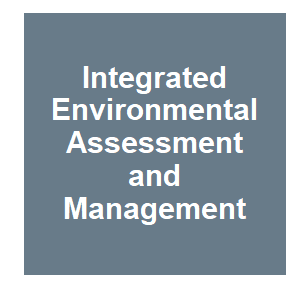
|
Gene drives: Navigating perils of engineered eradication, with Christoph Then.IEAM Podcast, Integrated Environmental Assessment and Management, 2020.Imagine a world without natural enemies like parasites or deadly pathogens. Where crops grow unfettered by rodent and insect pests. Advances in genetic engineering now hold the possibility to alter genomes at the population level, but is it too good to be true? A critical review ... Keywords: Anopheles, gene drive synthetic, malaria, mosquitoes, policy, regulation, risk assessment |

|
Incorporating Characteristics of Gene Drive Engineered Ae. aegypti as Methods to Reduce Dengue and Zika Virus into the Bayesian Network – Relative Risk Model, Using Ponce, Puerto Rico as a Case StudyS. R. Eikenbary, WWU Graduate School Collection, 2020.
The Bayesian network relative risk model can perform the risk assessment of gene drive engineered Ae. aegypti for vector control and as part of an adaptive management strategy to reduce dengue and Zika transmission. This study illustrates how the BN-RRM can integrate gene drive ... Keywords: Anopheles, gene drive synthetic, malaria, mosquitoes, policy, regulation, risk assessment |

|
EPA Grants First Permit to Test Genetically Modified MosquitoesAdam Allington, Bloomberg Law, 2020.
British biotech company Oxitec Ltd was granted an experimental use permit to release a genetically engineered type of the mosquito species Aedes aegypti, which is a known vector of Zika virus and viruses that cause yellow fever and dengue fever, the Environmental Protection ... Keywords: Anopheles, gene drive synthetic, malaria, mosquitoes, policy, regulation, risk assessment |

|
EPA Approves Experimental Use Permit to Test Innovative Biopesticide Tool to Better Protect Public HealthEPA, EPA, 2020.
Today, after extensive evaluation of the best available science and public input, the U.S. Environmental Protection Agency (EPA) has granted an experimental use permit (EUP) to Oxitec Ltd. to field test the use of genetically engineered Aedes aegypti mosquitoes as a way to reduce ... Keywords: Anopheles, gene drive synthetic, malaria, mosquitoes, policy, regulation, risk assessment |
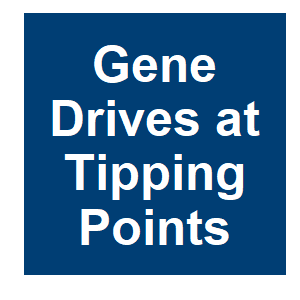
|
Limits of Knowledge and Tipping Points in the Risk Assessment of Gene Drive OrganismsArnim von Gleich and Winfried Schröder, Gene Drives at Tipping Points, 2020.
New challengesTipping point in the risk assessment of genetically engineered (GE) organisms are expected to emerge in the context of so-called ‘gene drives’. Based on a review of findings from current knowledge of GE organisms, it is concluded that the risk assessment of gene ... Keywords: Anopheles, gene drive synthetic, malaria, mosquitoes, policy, regulation, risk assessment |

|
Case Study 2: Oilseed Rape (Brassica napus L.)Johnannes L. Frieß, Broder Breckling, Kathrin Pascher and Windfried Schröder, Gene Drives at Tipping Points, 2020.
SPAGESelf-Propagating Artificial Genetic Elements (SPAGE) (Self-Propagating Artificial Genetic Element) technologies allow for a proliferation of genetic information on the populationPopulation level at a higher rate than usual Mendelian inheritanceMendelian inheritance. ... Keywords: Anopheles, gene drive synthetic, malaria, mosquitoes, policy, regulation, risk assessment |

|
Vulnerability Analysis of Ecological SystemsCarina R. Lalyer, Arnim von gleich, Bernd Giese, Gene Drives at Tipping Points, 2020.
Vulnerability analysis can be seen as the counterpart to technology characterization. Technology characterisation scrutinises the intervening technology. Vulnerability analyses potentially affected systems. That may be socio-ecological, socio-technical, socio-economic or other ... Keywords: Anopheles, gene drive synthetic, malaria, mosquitoes, policy, regulation, risk assessment |

|
Gene Drives Touching Tipping PointsBrodee Breckling, Arnim von Gleich,, Gene Drives at Tipping Points, 2020.
Tipping points and tipping elements, phase transitions and similar critical phenomena are widely discussed in scientific as well as socio-economic contexts as components to understand unforeseen far reaching changes and critical transitions from one stage into another in complex ... Keywords: Anopheles, gene drive synthetic, malaria, mosquitoes, policy, regulation, risk assessment |

|
Gene Drives at Tipping PointsAmin von Gleich and Winfried Schroder, Gene Drives at Tipping Points, 2020.
This open access book reports on a pilot project aiming at collecting information on the socio-ecological risks that could arise in the event of an uncontrolled spread of genetically engineered organisms into the environment. The researchers will, for instance, be taking a closer ... Keywords: Anopheles, gene drive synthetic, malaria, mosquitoes, policy, regulation, risk assessment |

|
Spatio-temporal controllability and environmental risk assessment of genetically engineered gene drive organisms from the perspective of EU GMO RegulationC. Then, K. Kawall and N. Valenzuela, Integrated Environmental Assessment and Management, 2020.
Gene drive organisms are a recent development created by using methods of genetic engineering; they inherit genetic constructs that are passed on to future generations with a higher probability than with Mendelian inheritance. There are some specific challenges inherent to the ... Keywords: Anopheles, gene drive synthetic, malaria, mosquitoes, policy, regulation, risk assessment |

|
Auditing preparedness for vector control field studiesC. M. Collins and M. M. Quinlan, American Journal of Tropical Medicine and Hygiene, 102:707-710. 2020.
The value of baseline entomological data to any future area-wide release campaign relies on the application of consistent methods to produce results comparable across different times and places in a stepwise progression to larger releases. Traditionally, standard operating ... Keywords: Anopheles, gene drive synthetic, malaria, mosquitoes, policy, regulation, risk assessment |
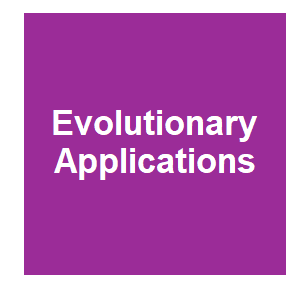
|
Evaluating the Probability of CRISPR-based Gene Drive Contaminating Another SpeciesV. Courtier-Orgogozo, A. Danchin, P.-H. Gouyon and C. Boëte, Evolutionary Applications, Early Online. 2020.
he probability D that a given CRISPR-based gene drive element contaminates another, non-target species can be estimated by the following Drive Risk Assessment Quantitative Estimate (DRAQUE) Equation: D = (hyb + transf).express.cut.flank.immune.nonextinct with ... Keywords: Anopheles, gene drive synthetic, malaria, mosquitoes, policy, regulation, risk assessment |
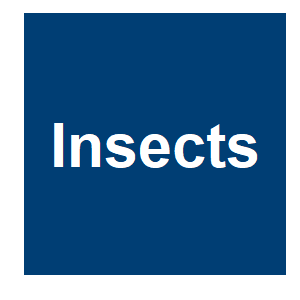
|
Peri-Urban Community Attitudes towards Codling Moth Trapping and Suppression Using the Sterile Insect Technique in New ZealandG. Paterson, G. L. W. Perry, J. T. S. Walker and D. M. Suckling, Insects, 10. 2019.
New, more socially-acceptable technologies are being developed to suppress horticultural pests, because suppression is technically difficult with current technologies, especially in urban areas. One technique involves the release of sterile insects to prevent offspring in the ... Keywords: Anopheles, gene drive synthetic, malaria, mosquitoes, policy, regulation, risk assessment |

|
Synthetic Biology: Research Needs for Assessing Environmental ImpactsC. M. Warner, S. R. Carter, R. F. Lance, F. H. Crocker, H. N. Meeks, B. L. Adams, M. L. Magnuson, T. Rycroft, K. Pokrzywinski and E. J. Perkins, Synthetic Biology 2020: Frontiers in Risk Analysis and Governance, 2019.
Synthetic biology and its applications have the potential to greatly improve economic development, public health, environmental stewardship, technological advancement, and many other areas. In May 2017, sixty individuals gathered in Lexington, Massachusetts for a workshop ... Keywords: Anopheles, gene drive synthetic, malaria, mosquitoes, policy, regulation, risk assessment |

|
RISCOS BIOTECNOLÓGICOS AMBIENTAIS E PARTICIPAÇÃO SOCIAL: POR UMA GESTÃO DEMOCRÁTICA DA BIOTECNOLOGIA GENE DRIVE NA ATUAÇÃO DA CTNBIOL. C. Rodrigues, Revista Jurídica (FURB), 22. 2019.
This research aims to study the way in which the environmental risks of Gene Drive biotechnology challenge forms of effective social participation, inserted in the management of biotechnological risks, whose responsibility lies with the organs ... Keywords: Anopheles, gene drive synthetic, malaria, mosquitoes, policy, regulation, risk assessment |
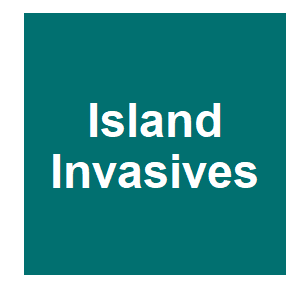
|
A potential new tool for the toolbox: assessing gene drives for eradicating invasive rodent populationsK. J. Campbell, J. R. Saah, P. R. Brown, J. Godwin, F. Gould, G. R. Howald, A. Piaggio, P. Thomas, D. M. Tompkins, D. Threadgill, J. Delborne, D. Kanavy, T. Kuiken, H. Packard, M. Serr and A. Shiels, Island invasives: scaling up to meet the challenge, 2019.
Invasive rodents have significant negative impacts on island biodiversity. All but the smallest of rodent eradications currently rely on island-wide rodenticide applications. Although signifi cant advances have been made in mitigating unintended impacts, rodent eradication on ... Keywords: Anopheles, gene drive synthetic, malaria, mosquitoes, policy, regulation, risk assessment |
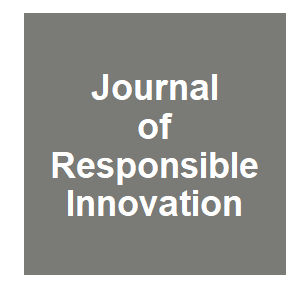
|
Regulating animals with gene drive systems: lessons from the regulatory assessment of a genetically engineered mosquitoZ. Meghani and J. Kuzma, Journal of Responsible Innovation, 5:S203-S222. 2018.
In this paper, we consider the question of whether the United States Food and Drug Administration is prepared to effectively regulate insects and other animals with gene drives. Given the profound impact that gene drives could have on species and ecosystems, their use is a ... Keywords: Anopheles, gene drive synthetic, malaria, mosquitoes, policy, regulation, risk assessment |

|
Identifying and detecting potentially adverse ecological outcomes associated with the release of gene-drive modified organismsK. R. Hayes, G. R. Hosack, G. V. Dana, S. D. Foster, J. H. Ford, R. Thresher, A. Ickowicz, D. Peel, M. Tizard, P. De Barro, T. Strive and J. M. Dambacher, Journal of Responsible Innovation, 5:S139-S158. 2018.
In this paper, we outline methods to identify hazards and detect potentially adverse ecological outcomes at the individual (genotype, phenotype), population, community and ecosystem level, when progressing Gene Drive Modified Organisms through a phased test and release pathway. ... Keywords: Anopheles, gene drive synthetic, malaria, mosquitoes, policy, regulation, risk assessment |
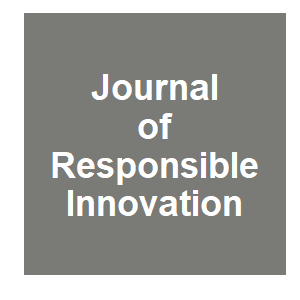
|
Identifying and detecting potentially adverse ecological outcomes associated with the release of gene-drive modified organismsHayes, KRH, G. R.; Dana, G. V.; Foster, S. D.; Ford, J. H.; Thresher, R.; Ickowicz, A.; Peel, D.; Tizard, M.; De Barro, P.; Strive, T.; Dambacher, J. M., Journal of Responsible Innovation, 5:S139-S158. 2018.
Synthetic gene drives could provide new solutions to a range of old problems such as controlling vector-borne diseases, agricultural pests and invasive species. In this paper, we outline methods to identify hazards and detect potentially adverse ecological outcomes at the ... Keywords: Anopheles, gene drive synthetic, malaria, mosquitoes, policy, regulation, risk assessment |

|
Guidance on risk assessment of living modified organisms and monitoring in the context of risk assessmentAd Hoc Technical Expert Group (AHTEG) on Risk Assessment and Risk Management,, Convention on Biological Diversity, 2016.
This document was developed by the Ad Hoc Technical Expert Group (AHTEG) on Risk Assessment and Risk Management, with input from the Open-ended Online Expert Forum, in accordance with terms of reference set out by the Conference of the Parties serving as the meeting of the ... Keywords: Anopheles, gene drive synthetic, malaria, mosquitoes, policy, regulation, risk assessment |
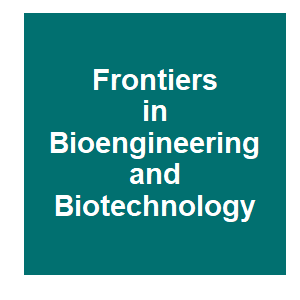
|
Can systematic reviews inform GMO risk assessment and risk management?Kohl, CF, G.; Sweet, J.; Spok, A.; Haddaway, N.R.; Wilhelm, R.; Unger, S.; Schiemann, J., Frontiers in Bioengineering and Biotechnology, 3:113. 2015.
Systematic reviews represent powerful tools to identify, collect, synthesize, and evaluate primary research data on specific research questions in a highly standardized and reproducible manner. They enable the defensible synthesis of outcomes by increasing precision and ... Keywords: Anopheles, gene drive synthetic, malaria, mosquitoes, policy, regulation, risk assessment |

|
Guidance framework for testing of genetically modified mosquitoesWHO, WHO-TDR, 2014.
As the research progresses, a need has been expressed both within the scientific community and by the public for additional standards and guidance. WHO-TDR and the Foundation for the National Institutes of Health (FNIH) co-sponsored a technical consultation meeting in 2009 to ... Keywords: Anopheles, gene drive synthetic, malaria, mosquitoes, policy, regulation, risk assessment |
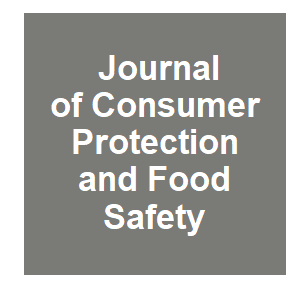
|
Regulatory experience and challenges for the release of GM insectsBeech, C, Journal Fur Verbraucherschutz Und Lebensmittelsicherheit-Journal of Consumer Protection and Food Safety, 9:S71-S76. 2014.
Genetically modified (GM) insects are a potentially valuable new tool for the biological control of insect pests of humans, animals and plants. Considerable progress has been made recently in transfer of GM insects from the laboratory to release and evaluation in the environment. ... Keywords: Anopheles, gene drive synthetic, malaria, mosquitoes, policy, regulation, risk assessment |

Contact
David O’Brochta
Foundation for the
National Institutes of Health
geneconvenevi@fnih.org
RSS

